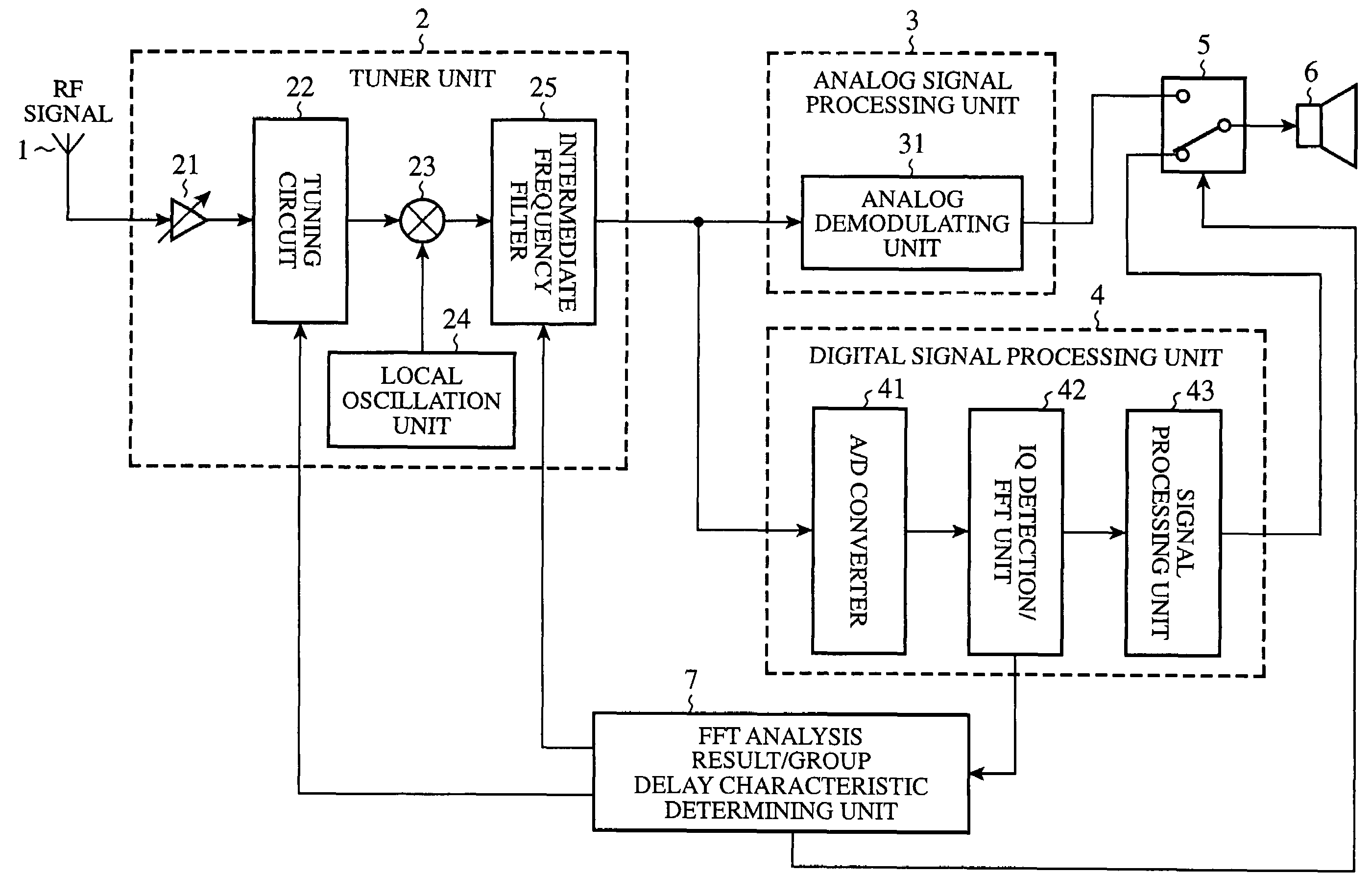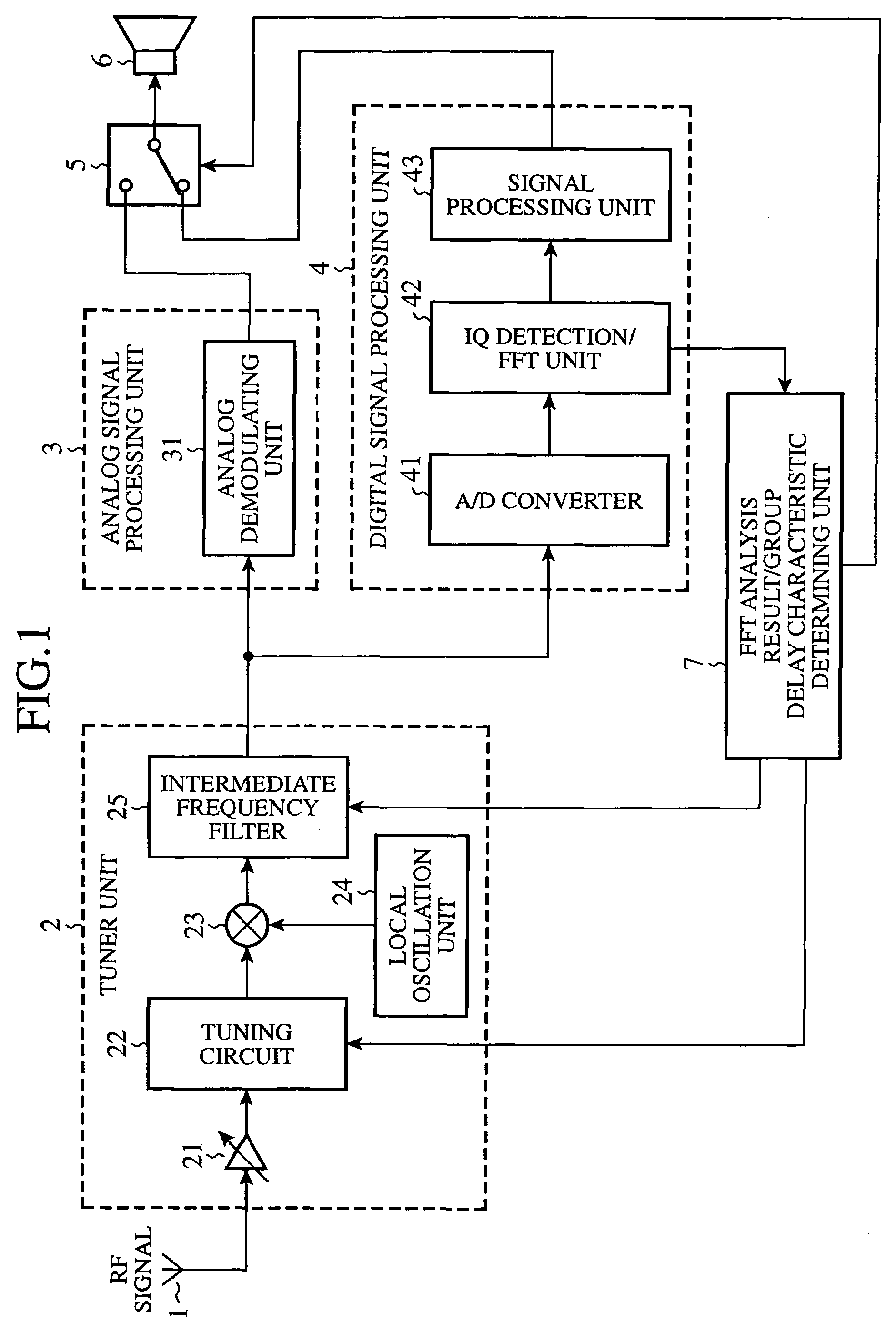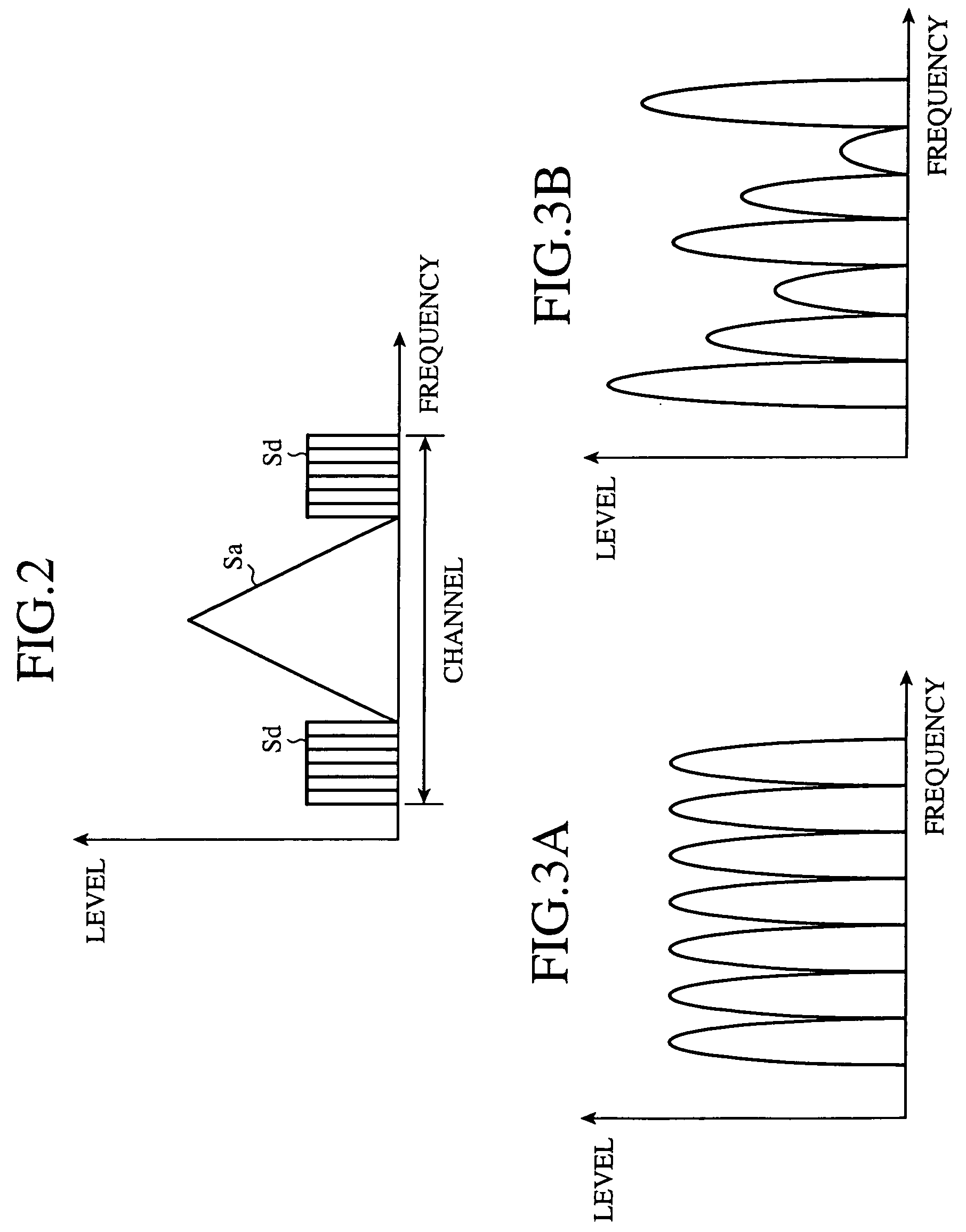Receiver capable of switching between digital and analog broadcasting signals
a technology of digital and analog broadcasting signals, applied in the field of receivers, can solve the problems of prior art broadcast receivers that cannot carry out appropriate switching operations, prior art broadcast receivers cannot properly determine, and agc circuits cannot carry out proper gain control
- Summary
- Abstract
- Description
- Claims
- Application Information
AI Technical Summary
Benefits of technology
Problems solved by technology
Method used
Image
Examples
embodiment 1
[0033]FIG. 1 is a block diagram showing the structure of a receiver in accordance with embodiment 1 of the present invention. This receiver can simultaneously receive RF signals (i.e., high frequency signals) respectively associated with a plurality of channels provided by an IBOC system that can offer both digital broadcast and analog broadcast at the same time. FIG. 2 is a diagram showing a spectrum of an RF signal (or an intermediate frequency signal) containing both an analog broadcasting signal Sa transmitted via a channel of the IBOC system and a digital broadcasting signal Sd having the same centre frequency as the analog broadcasting signal Sa and being divided into two parts arranged on both sides of the analog broadcasting signal Sa with respect to frequency (i.e., in frequency domain). In this case, the analog broadcasting signal Sa can be an FM audio signal which is frequency-modulated, and the digital broadcasting signal Sd can be an OFDM signal, i.e., a digital audio s...
embodiment 2
[0044]In embodiment 2, the details of the structures and operations of a tuning circuit 22 and an intermediate frequency filter circuit 25 of a tuner unit 2 of a receiver having the same structure as that of the embodiment 1 as shown in FIG. 1 will be explained. FIG. 6 is a circuit diagram showing the structure of a part of the receiver in accordance with embodiment 2 of the present invention. In this figure, an antenna 1, an RF amplifier 21, a mixer circuit 23 and an FFT analysis result / group delay characteristic determining unit 7, and an analog signal processing unit, a digital signal processing unit, a switching circuit, etc. not shown in the figure have the same structures as those of embodiment 1 as shown in FIG. 1, respectively.
[0045]In the tuning circuit 22, a capacitor C1, an inductance L1, and two resistors R1 and R2, one of which is selected by a switching circuit 11, are connected in parallel. Those components constitute a resonance circuit of the tuning circuit 22. The ...
embodiment 3
[0057]FIG. 11 is a circuit diagram showing the structure of a part of a receiver in accordance with embodiment 3 of the present invention. In this figure, the same components as those of embodiment 1 shown in FIG. 1 are designated by the same reference numerals, and therefore the explanation of those components will be omitted hereafter. In a tuner unit 2 of the receiver of FIG. 11, both a band stop filter circuit 26 and a switching circuit 27 for inserting the band stop filter circuit 26 between a tuning circuit 22 and a mixer circuit 23, or directly connecting the tuning circuit 22 to the mixer circuit 23 are newly added. The receiver further includes an IF level determining unit 12 (i.e., intermediate frequency signal determining means) for determining the level of an intermediate frequency signal associated with a selected channel and delivered thereto from an intermediate frequency filter circuit 25 of the tuner unit 2. The IF level determining unit 12 delivers an AGC or gain c...
PUM
 Login to View More
Login to View More Abstract
Description
Claims
Application Information
 Login to View More
Login to View More - R&D
- Intellectual Property
- Life Sciences
- Materials
- Tech Scout
- Unparalleled Data Quality
- Higher Quality Content
- 60% Fewer Hallucinations
Browse by: Latest US Patents, China's latest patents, Technical Efficacy Thesaurus, Application Domain, Technology Topic, Popular Technical Reports.
© 2025 PatSnap. All rights reserved.Legal|Privacy policy|Modern Slavery Act Transparency Statement|Sitemap|About US| Contact US: help@patsnap.com



